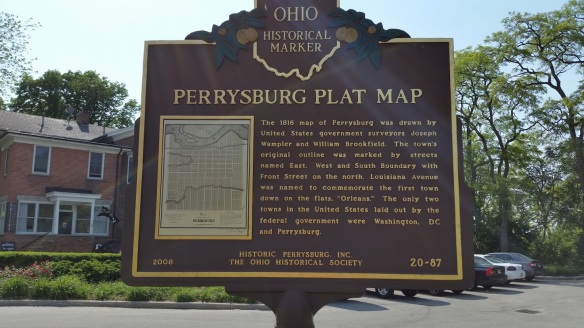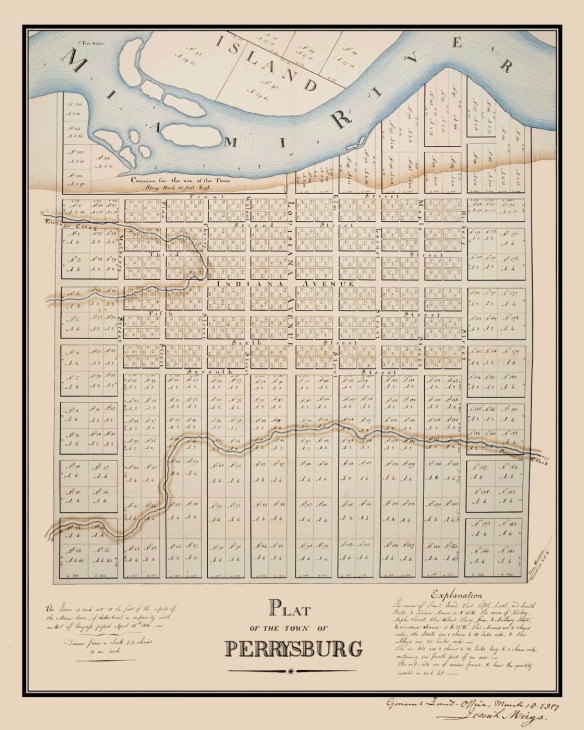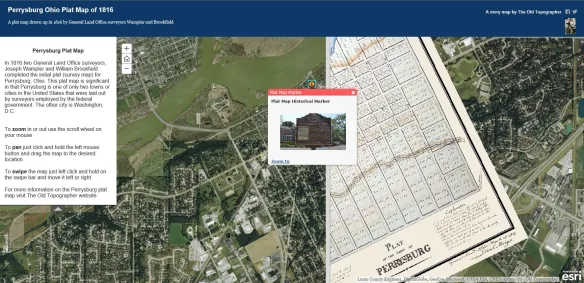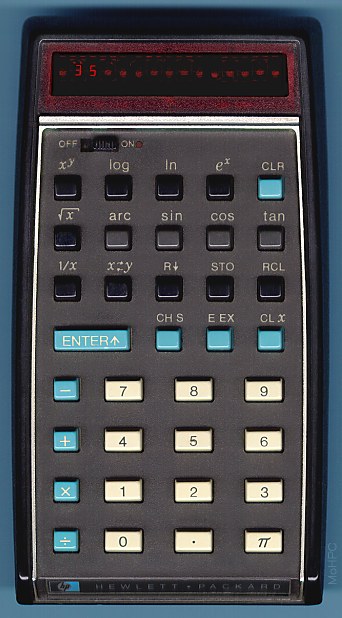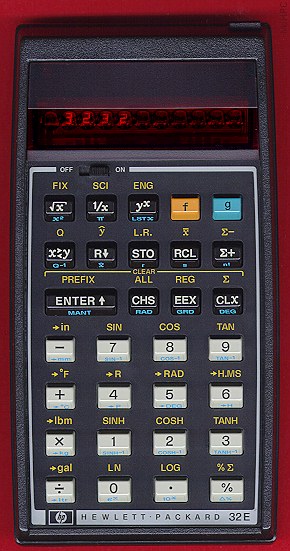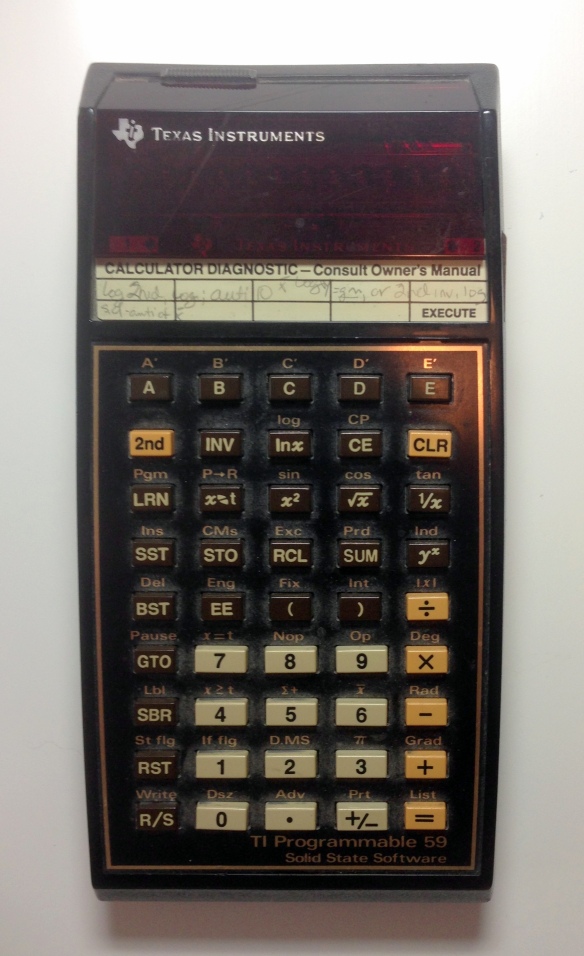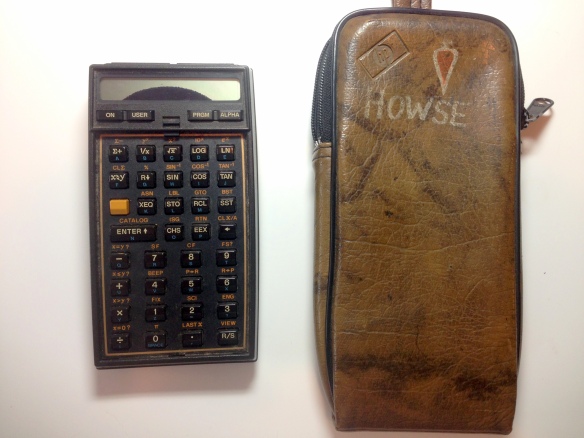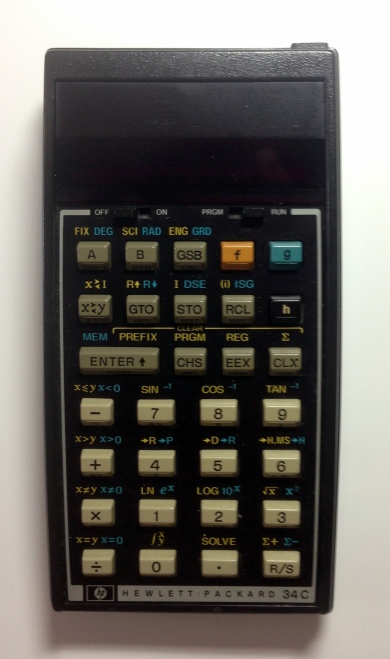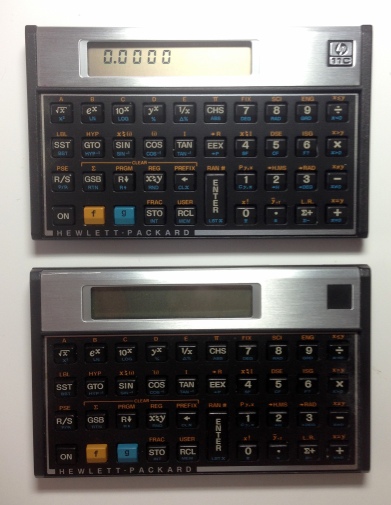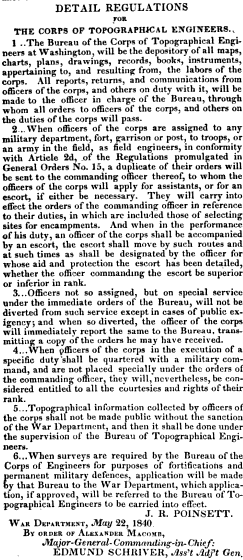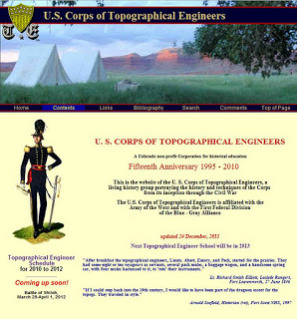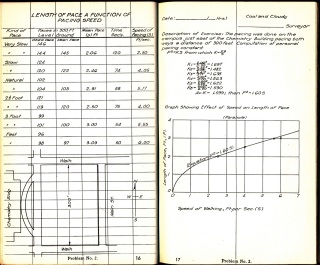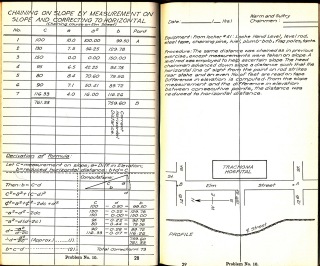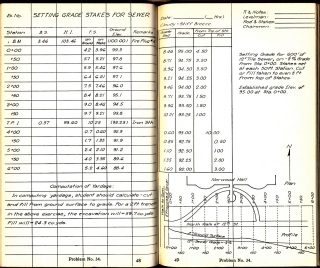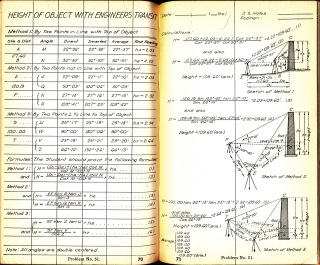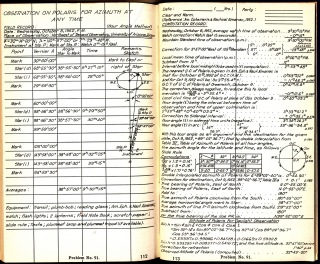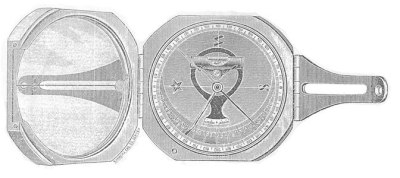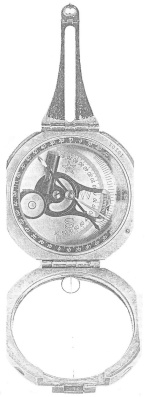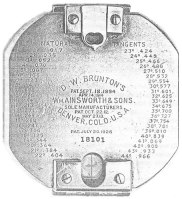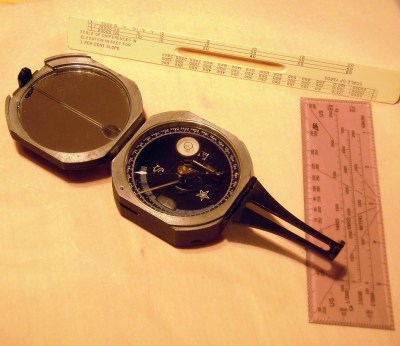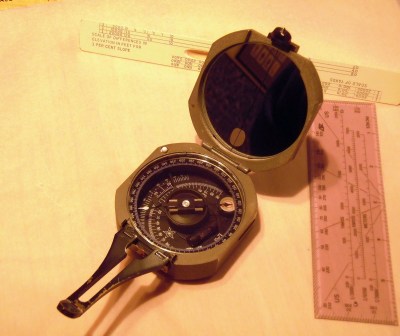I am Jeremiah Dixon
I am a Geordie boy
A glass of wine with you, sir
And the ladies I’ll enjoy
All Durham and Northumberland
Is measured up by my own hand
It was my fate from birth
To make my mark upon the earth
He calls me Charlie Mason
A stargazer am I
It seems that I was born
To chart the evening sky
They’d cut me out for a baking bread
But I had other dreams instead
This baker’s boy from the west country
Would join the Royal Society
We are sailing to Philadelphia
A world away from the coaly Tyne
Sailing to Philadelphia
To draw the line
A Mason-Dixon line
It’s amazing where you find historical references. I was listening to a radio talk show the other day and one of the bumper music selections was a duet by Mark Knopfler and James Taylor titled ‘Sailing to Philadelphia‘. The ballad tells the tale of Charles Mason and Jeremiah Dixon, surveyors who, in the mid-1700s, surveyed the boundary between the colonies of Maryland, Pennsylvania and Delaware. The song drew me back to a subject that has fascinated me for a long time – the story of the great boundary survey and how two talented individuals had such a huge impact on scientific and political history.
The Calvert family, which controlled Maryland, and the Penn family, which controlled Pennsylvania and Delaware, had been clashing for years over the boundary between the two colonies. At points the conflict became violent, and as European settlers pushed westward in both colonies the need to firmly establish the boundary became critical. In 1732 the Calverts and Penns agreed on a definition of the boundary: starting at a point formed by the intersection of a line of latitude set 15 miles south of the southernmost limit of the City of Philadelphia and a line of longitude that runs tangent to an 12 mile arc centered on the town of New Castle in Delaware. This definition of a political border as an arc highlights why politicians, particularly politicians with a weak grasp of geometry, should never be allowed to define borders.
After at least one bungled attempt to survey the border it became clear that the task required the best surveyors trained in the newest methods and using the best surveying and time keeping equipment available. In 1761 England’s Royal Astronomer James Bradley recommended two uniquely talented astronomers and surveyors, Charles Mason and Jeremiah Dixon, to tackle the job. Bradley also made sure they were backed by all the resources of the Royal Society and equipped by London’s best instrument makers.
The Royal Society properly viewed the task as one of the greatest scientific and technical challenges of the 18th century, a mission that would have far wider benefit to mankind than just marking a border between to quarreling colonies. It would help prove the utility of longitude determination using chronometers, would test the accuracy and precision of survey instruments made by England’s top makers, would establish the world’s longest and most precise survey baseline and ultimately would return data needed to help establish the precise length of a degree of latitude.

The Mason – Dixon line is actually two lines, or line segments. The east-west line, set at a latitude described as ‘15 miles south of the the southernmost limit of the City of Philadelphia and running five degrees of longitude westward from the Delaware River‘ is what is commonly viewed as the ‘Mason-Dixon line’. However, the north-south segment, set as a line tangent to a 12 mile arc centered in New Castle, Delaware, was actually the most challenging part of the survey. Establishing a line on the ground that is tangent to a continuous arc was a particularly difficult surveying challenge, and one that had never been successfully attempted before Mason and Dixon tackled it
Mason and Dixon had worked together for the Royal Society in the past and were an excellent team. They were also two of the most experienced field surveyors and astronomers of their time. No better team could have been found – their skills, experience, dedication and drive were unmatched.
Mason and Dixon arrived in Philadelphia in late 1763 and set immediately to work. They determined the southern boundary of the City of Philadelphia, established the latitude by astronomical observation, surveyed 31 miles west along the same line of latitude to clear the Delaware River and its local tributaries and established an observatory at a farm owned by John Harland. On Harland’s property they set a monument known as the Stargazers’ Stone on the same line of latitude they had determined at the southernmost boundary of Philadelphia.
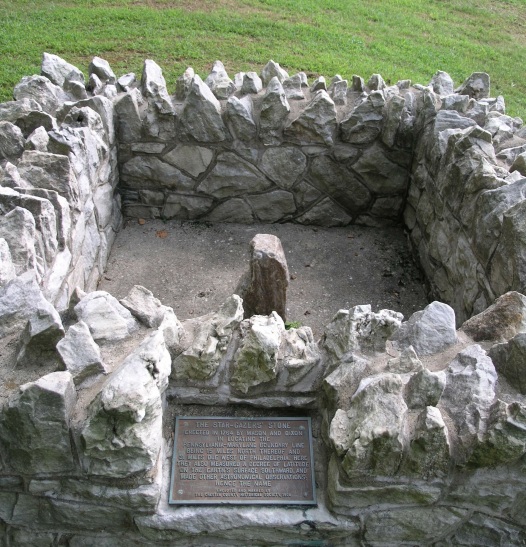
The ‘Stargazers’ Stone’ set by Mason & Dixon just north of Harland Farm in Embreeville, Pa.
In 1764 Mason and Dixon ran a survey line 15 miles south of Harlan’s farm and set an oak post (called the Post mark’d West by the surveyors) at 39° 43′ 26.4″ north latitude. This post marked a latitude point precisely 15 miles south of the southernmost limit of the City of Philadelphia. It served as the origin point, or point of beginning, for the survey.
For the remainder of 1764 Mason and Dixon worked on the north – south portion of the line to better define the border between Maryland and Delaware (remember – this was partly defined as a line tangent to a 12 mile arc arc centered on New Castle, Delaware).
In 1765 the pair began work on the line westward, and this effort consumed the better part of the next three years. The survey party consisted of over 100 workers – axmen, Indian guides, surveyors assistants, hunters, runners, teamsters and general laborers. The work was both physically and mentally demanding. The effort required teams of axmen hacking a westward line of sight through virgin wilderness up and over the Allegheny Mountains, the survey team directing their clearing work using compasses that had to be checked almost daily for local variance (declination). Distances were precisely measured using survey chains or rods. At intervals Mason & Dixon would stop, set up astronomical observation stations and verify the line was on the same precise latitude as set at the Post mark’d West. Any necessary corrections to the line were made, north or south, depending on the results of the observations, and the survey continued westward. Following behind, teams of workers set heavy stone markers at one mile intervals and at five mile intervals specially engraved ‘crown stones’ were set, with one side engraved with the Calvert family coat-of-arms, the other with the Penn family coat-of-arms. On more than one occasion, after field checks revealed errors, crews had to go back and move the markers to their correct location.
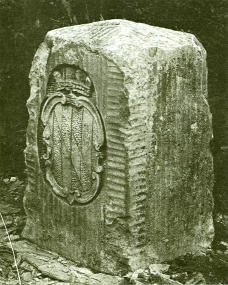
A crown stone marker showing the Calvert coat-of-arms
The original survey was supposed to run five degrees of longitude (265 miles) west from the Delaware River to fix the western boundary of the colony of Pennsylvania, but at the 233 mile point the party’s Mohawk guides called a halt. They had reached the western-most limit of the agreement for the survey set with the chiefs of the Six Nations and would go no further. Mason and Dixon realized that, for now, the survey had reached its end. At the 233 mile point they set a stone pyramid to mark the end of the survey and headed east to Philadelphia to analyze their results and prepare their reports.
In the summer of 1768 Mason and Dixon delivered 200 printed copies of their maps, survey data and final report to the project’s commissioners. The Calverts and the Penns accepted the results of the survey and the boundary between the colonies was formally recognized. It wasn’t until after the American Revolution, in 1784, that the line was extended to the full five degrees of longitude, this time by two of America’s best astronomers, surveyors and instrument makers – David Rittenhouse and the remarkable and indispensable Andrew Ellicott.
Sadly, Mason and Dixon never worked together again. In 1773 Jeremiah Dixon was elected a fellow of the Royal Society and he soon retired to his native Cockfield a wealthy and well respected gentleman surveyor. He died young in 1770, unmarried and with no heirs. Charles Mason continued to work for the Royal Observatory and its new Astronomer Royal, the Reverend Dr. Nevil Maskelyne. But Dixon became disillusioned with his work in England and lack of recognition for his continued contributions to astronomy. Nevil Maskelyne was well known as a ‘glory hog’ who often refused to give credit and recognition to others contributing to projects under his direction. While working on the boundary survey Mason had become good friends with many American scientific luminaries such as Ben Franklin and David Rittenhouse. Mason likely figured his talents would get more respect in the former colonies. In early 1786, while in bad health, he sailed again for Philadelphia with his wife and eight children. On arrival he communicated briefly with Benjamin Franklin but died in late October 1786 and was buried in the Christ Church cemetery in Philadelphia.
Mason and Dixon’s work on the boundary line was recognized in its time as an outstanding scientific achievement. In the mid-18th century the science of geodesy – the study of the shape of the earth – was in its infancy and there were a lot of unanswered questions. The best minds of Europe, particularly in France and England were turning their efforts to developing a better understanding the size, shape and form of the earth. At the time the best ways to work out these questions was to study closely the detailed results of ‘great arc’ surveys – highly accurate surveys that covered great distances. In 1830 the first great leap in applied geodesy occurred when Astronomer Royal George Airy published the first accurate spheroid of the Earth. A spheroid is a mathematical definition of the size and shape of the earth, and an accurate spheroid definition is the foundation on which accurate mapping and surveying is built. To calculate his definition Airy used multiple ‘great arc’ survey results provided by British, French, Russian and German scientists, but the only great arc survey he used to define the Western Hemisphere was the boundary survey conducted by Mason and Dixon some 70 years previously.
Good work stands the test of time, and Mason and Dixon’s survey remained one of the most accurate boundary surveys conducted in the Americas well into the 20th century. Even today surveyors using modern GPS-based systems marvel at the accuracy and precision these mid-18th century surveyors achieved. So the next time you cross the state line between Pennsylvania and Maryland remember the two geniuses who’s colonial-era work to settle an argument over a property line ended up helping to accurately define the shape of the planet we live on.
– Brian
Post script – as with so many of my posts on this blog, I stood on the shoulders of giants while writing this one. There’s a lot of good material covering Mason and Dixon’s boundary survey available on the web. John Mackenzie of the University of Delaware has published perhaps the best one page history of the survey available on the web (although his essay ends up wandering into territory I think should have been saved for a separate posting). But the story of the boundary survey and Mason and Dixon’s efforts really needs a book to cover fully and adequately. We are fortunate that Edwin Danson has written a wonderful volume that covers the background on the survey and a full accounting of Mason and Dixon’s work. Danson’s book is titled ‘Drawing The Line‘ and in my mind it stands with other modern classics of popular science history like Dava Sobel’s ‘Longitude’ or John Wilford Noble’s ‘The Mapmakers’ as a must read for anyone interested in the topic.

